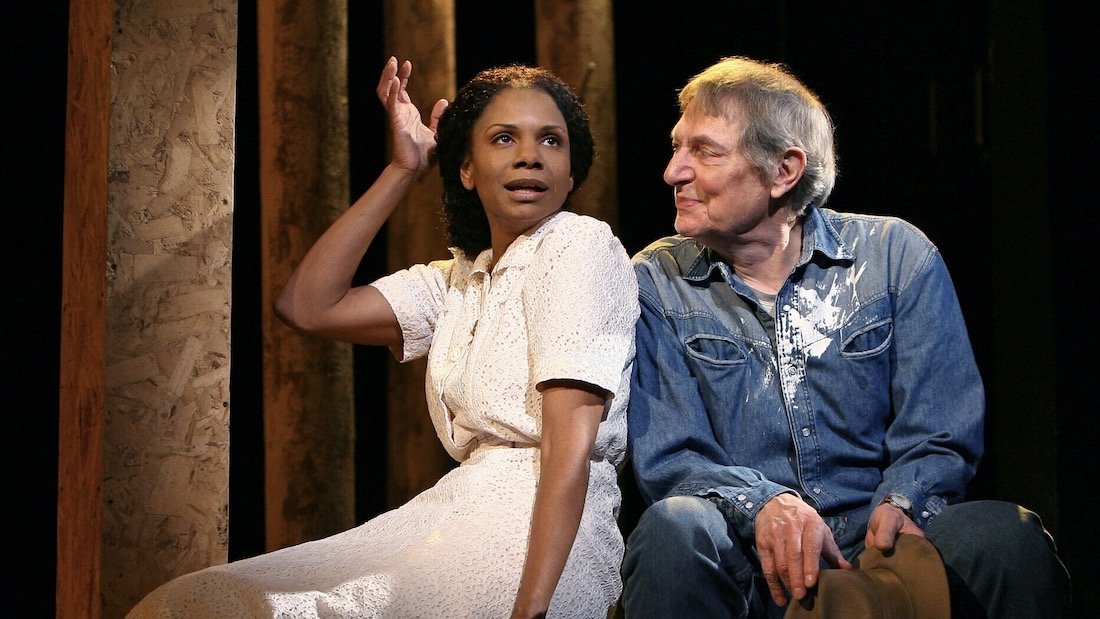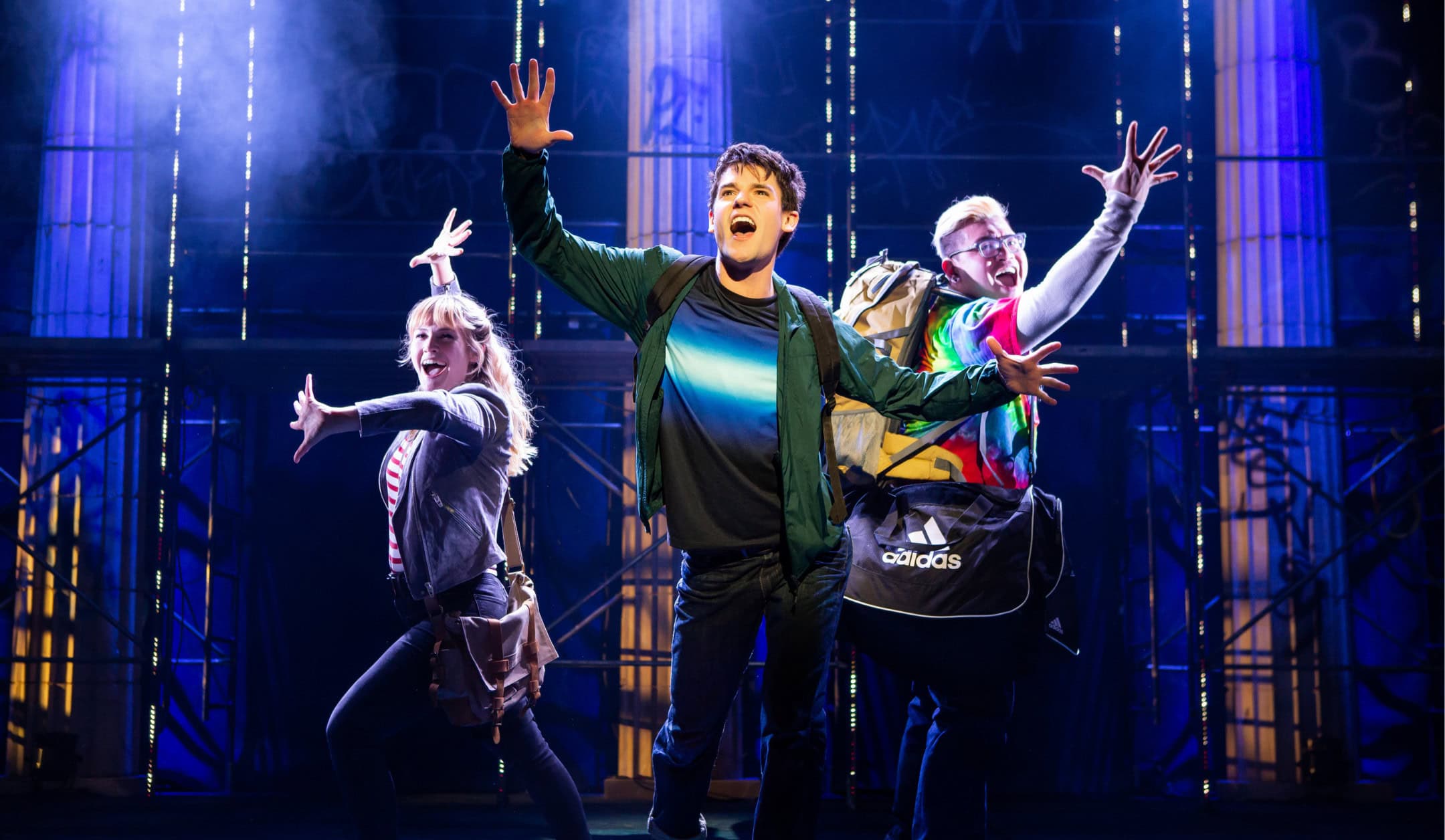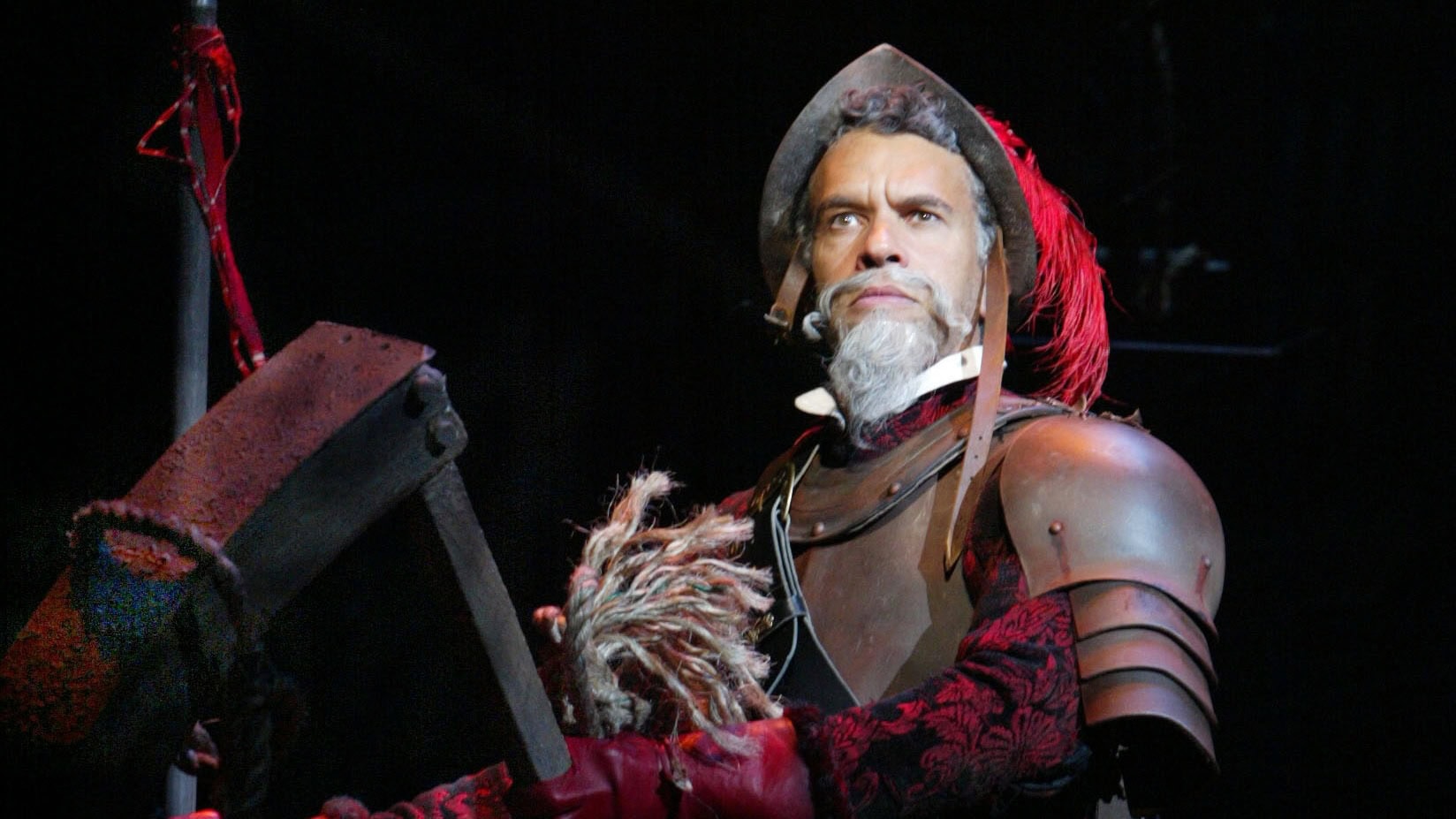
I wrote For Peter Pan on her 70th birthday as a gift for my mother (for her seventieth birthday). My mother grew up playing Peter Pan in Davenport, Iowa. As a child I looked at pictures scattered around my grandparents’ house of my mother wearing green tights and flying. One picture even had Mary Martin’s arm around my beaming mother. Mary Martin had come through Davenport, Iowa on a national tour. The local paper set up a meeting between their local Peter Pan (my teenaged mother) and Mary Martin in her dressing room, with a photo opportunity. My mother was so nervous that she forgot her Peter Pan script in Mary Martin’s dressing room, so Mary Martin sent it back signed, with a bouquet of flowers.
And so in my young mind, Peter Pan was conflated with my mother, who embodied the magic of theater. My mother was always someone who had an ambivalent relationship with the word “grown-up”, and she’s always stayed young, in the sense of being devoted, playful, and very much alive, in the theater. My mother was always acting in some play or another during my childhood in Chicago, and I would accompany her to small darkened theaters, sitting in the back, and taking notes. My mother still acts. (As a matter of fact, she just played a version of herself in For Peter Pan in Chicago. I thought the world might implode in the Borgesian sense when my mother played a version of my mother. But it did not explode. For me, it got a little bigger.)
My mother took a break from acting when my father grew sick and died at the age of 52. She lost my father, then her mother and father, in quick succession, nursing each of them through cancer. By one definition, you grow up when your parents die. So it’s perhaps fitting that I set this play on the eve of the family patriarch’s death.
I have a large extended Irish-Catholic family from Iowa that has always been, to me, the cradle of civilization. My own Mesopotamia is found along the banks of the Mississippi River in the Quad Cities, where I spent every holiday, catching fire flies with cousins, reading books all day while dipping my hand into a jar of homemade party mix, rolling down hills, lighting sparklers, and eating ham. I also spent my holidays in Iowa listening to people who love each other argue about politics. At some point I grew up, refused to eat ham, and argued with the people I love about politics. It is a family sport. It was a family sport that climaxed in the Clinton years, when the right and left were polarized in a new way, then got more hostile in the Bush years, and is starting to wane now, as we find we can no longer talk to each other across party lines. So we talk to each other about anything and everything but politics. And in the privacy of our own homes, we watch different news channels on TV. I love and adore my family. Part of what I tried to capture or preserve in the play (for myself as much as anyone) was a certain musicality of speech when a family of five is talking.
In my young mind, Peter Pan was conflated with my mother, who embodied the magic of theater.
J.M. Barrie wrote, in his preface to Peter Pan, to the five children he wrote the play for:
What I want to do first is to give Peter to the Five without whom he never would have existed. I hope, my dear sirs, that in memory of what we have been to each other you will accept this dedication with your friend’s love…I suppose I always knew that I made Peter by rubbing the five of you violently together…that is all he is, the spark I got from you… My grandest triumph, the best thing in the play of Peter Pan (though it is not in it), is that long after No. 4 had ceased to believe [in fairies], I brought him back to the faith for at least two minutes…
When I learned that Barrie wrote Peter Pan by rubbing five people he loved together, I felt less worried about writing a play by rubbing five people I love together. Because I was writing about living people with real histories (though their avatars are composite and fictional), I interviewed my extended family for the process, passed drafts by them, and courted their feedback. As I wrote the play, I called my characters 1 through 5 on the page, by birth order, as Barrie did — because I was more interested in the musicality of speech and polyphony that comes from a hive mind than I was in individuation. I wondered if it was possible to write a play about one’s family without it being a “family drama” of the sort that hinges on mudslinging and skeletons in the closet. I wondered if it was possible to write a play about one’s family with love, a play they might want to come see. Rather than hinging the play structurally on a buried or invented secret, I used a dramatic structure that approximated Japanese Noh drama, which has a three-part structure: the protagonist meets the ghost, then recognizes the ghost, then dances with or embraces the ghost. One might imagine this structure as a contemporary Midwestern Noh drama.
When I teach playwriting at Yale School of Drama, I often ask my students to begin by writing a personal “gift play” to another student. I pair them, have them interview their recipient, and write short plays, which they present in an intimate setting. I was inspired to do this by Lewis Hyde, who argues in his seminal book, The Gift, that “A gift that cannot be given away ceases to be a gift.” Hyde’s central theme is how artists survive in a capitalist economy, when the seeds of their art are actually much more firmly and naturally rooted in a gift economy. What his book taught me was how to keep looking for intrinsic reasons to make theater, rather than looking to the marketplace. Giving a gift to my mother and my extended family continues to be one of my favorite reasons to write a play. I thank them for receiving it. My hope was that every time Peter Pan died in this play and the audience resurrected her by clapping, my mother would live forever.
This is reprinted with permission from Playwrights Horizons.

Plays that Inspired Musicals

QUIZ: Which Character from The Lightning Thief Are You?

